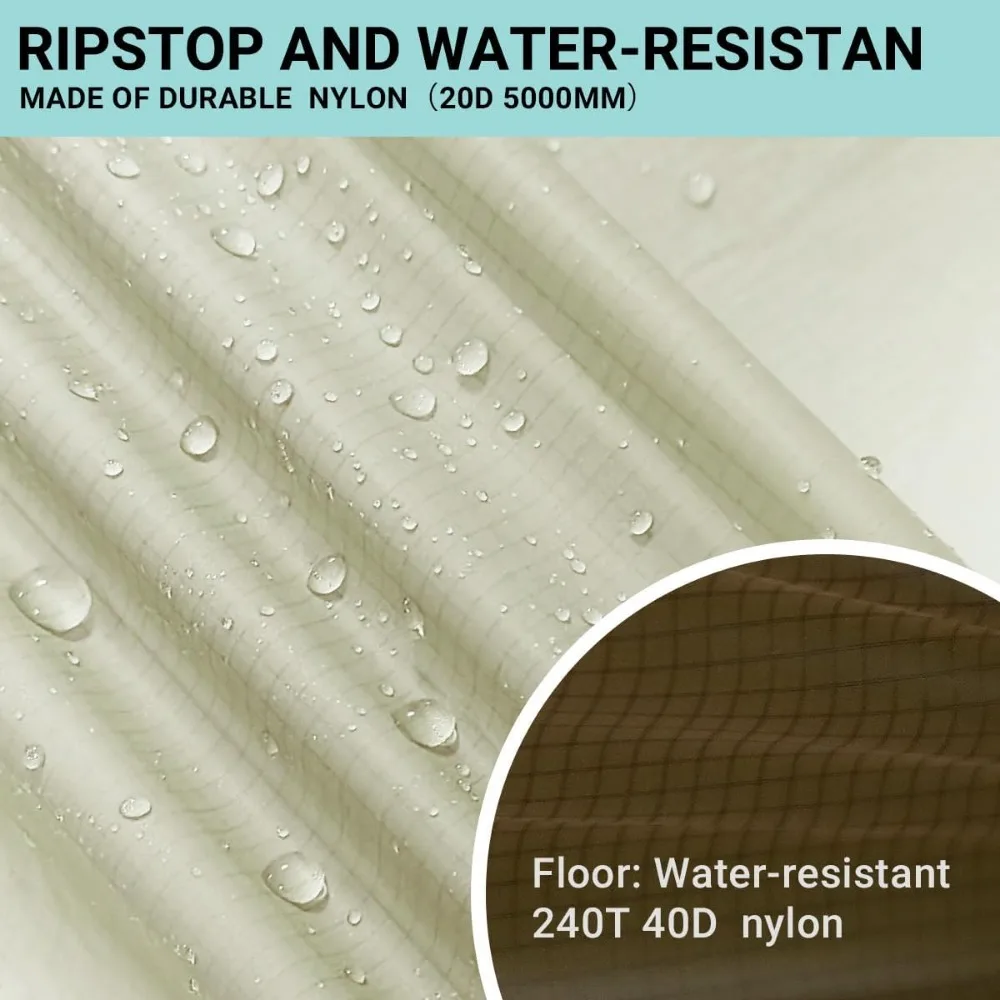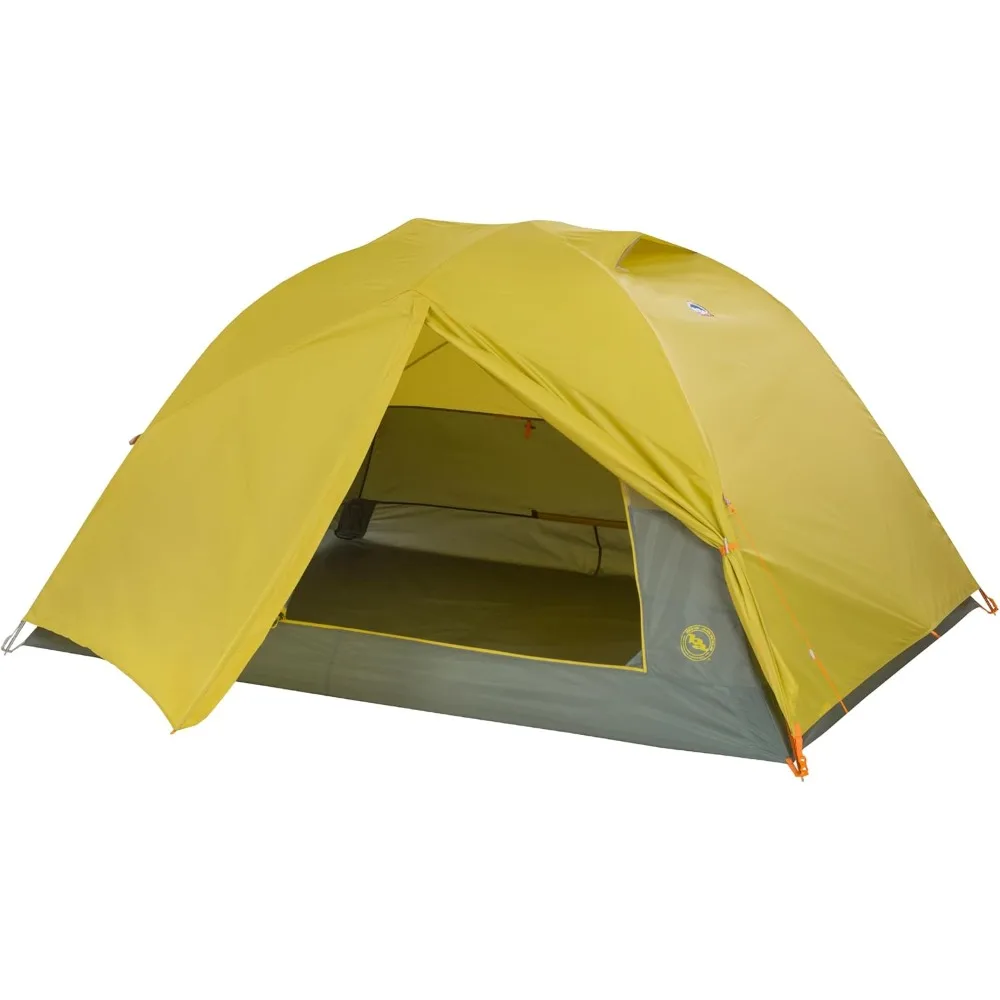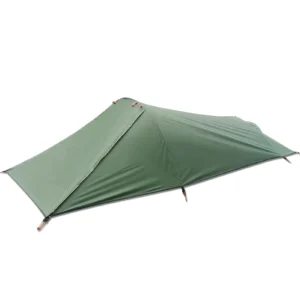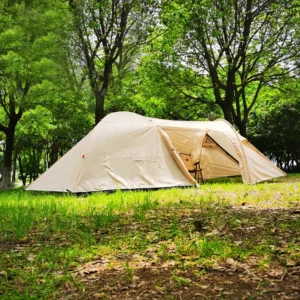When venturing outdoors, few experiences can dampen spirits more quickly than discovering your supposedly waterproof gear isn’t actually keeping water out. Whether facing unexpected rain during a hike or waking up to a soggy sleeping bag after overnight precipitation, maintaining your gear’s waterproof effectiveness is crucial for comfort and safety in the wilderness.
Understanding Waterproofing Technologies and Their Limitations
Before diving into maintenance techniques, it’s important to understand how waterproofing actually works. There’s often confusion between waterproof, water-resistant, and water-repellent properties.
Waterproof means the material completely prevents water from passing through, even under pressure. Water-resistant items can withstand light moisture but will eventually let water in during sustained exposure. Water-repellent gear has a surface treatment that causes water to bead and roll off rather than soak in.
Most modern waterproof outdoor equipment relies on three primary technologies:
- Waterproof membranes: Microscopically porous materials like GORE-TEX® and eVent™ that block water droplets while allowing water vapor (sweat) to escape
- Polyurethane (PU) coatings: Solid layers applied to fabrics that create a physical barrier against water
- Durable Water Repellent (DWR): Surface treatments that make water bead up and roll off rather than saturating the fabric
Understanding the ultimate guide for waterproof gear backpackers use can save you frustration and discomfort in challenging conditions.
Despite advanced technologies, all waterproofing has limitations. The most common reasons waterproof gear fails include:
- Dirt and oil accumulation that clogs breathable membranes
- Physical abrasion wearing away protective coatings
- Improper cleaning that damages waterproof treatments
- Natural degradation of DWR over time
When DWR fails, fabrics experience “wetting out” – instead of beading up, water saturates the outer layer. While the membrane underneath might still block water, the saturated fabric feels clammy, becomes heavier, and breathability significantly decreases. This is why regular maintenance is essential, especially for materials used in waterproof hiking gear that face constant environmental stresses.
Essential Cleaning: The Foundation of Waterproof Maintenance
Proper cleaning is the cornerstone of effective waterproofing maintenance. Without this crucial step, even the best re-waterproofing treatments will fail to adhere correctly or perform optimally.
Universal Cleaning Steps:
- Remove loose debris by gently brushing or shaking out the item
- Close all zippers and fastenings, turning pockets inside out when possible
- Read care labels for manufacturer-specific instructions
- Use technical cleaners designed for waterproof gear (avoid regular detergents)
- Rinse thoroughly to remove all soap residue
- Air dry completely before storage or applying treatments
Cleaning Products:
Technical cleaners like Nikwax Tech Wash or Grangers Performance Wash are specifically formulated to clean without leaving residues that can interfere with waterproofing.
Products to avoid:
* Fabric softeners (coat fabrics and impair water repellency)
* Bleach (damages technical fabrics and membranes)
* Powder detergents (can leave residue in fabrics)
* High-heat washing or drying (can melt adhesives and damage membranes)
Different materials require specialized approaches. For instance, canvas tent care involves different techniques than those used for synthetic rain jackets. Canvas typically needs gentler handling to preserve its natural waterproofing properties.
Thorough cleaning not only restores some water repellency immediately but also creates the perfect foundation for the next crucial step: reapplying water repellent treatments.
Reviving Water Repellency: DWR Reactivation and Reapplication
Once your gear is clean, you can focus on restoring its water-repellent properties. This process involves two potential approaches: reactivating existing DWR or applying a fresh coating.
DWR Reactivation Process:
Sometimes, the original water repellent treatment is still present but needs reactivation. This is a simple first step to try:
- Ensure the gear is completely clean
- Apply gentle heat to reactivate the chemical bonds in the DWR
* Use a tumble dryer on low heat for 15-20 minutes
* Alternatively, iron on low heat setting with a cloth barrier between the iron and fabric - Test by sprinkling water on the surface – it should bead up and roll off
Reapplying DWR Treatment:
When reactivation isn’t sufficient, it’s time to apply a fresh DWR coating:
Spray-On Treatments:
* Best for: Items with mixed materials like shoes or backpacks
* Application: Apply evenly to clean, damp fabric and remove excess with a clean cloth
* Allow to cure according to product instructions
Wash-In Treatments:
* Best for: Single-material items like jackets or pants
* Application: Add to wash cycle after cleaning or in a separate cycle
* More even coverage but less control over application
Many waterproof backpacking tents benefit from periodic DWR treatments, especially on fly sheets and floor areas that receive the most exposure to moisture.
Eco-friendly DWR options have improved significantly, offering PFC-free alternatives that perform nearly as well as traditional formulations while reducing environmental impact. Look for products labeled “PFC-free” or “eco-friendly” if sustainability is a priority.
Specialized Care for Different Gear Types
Different outdoor equipment requires tailored care approaches to maintain optimal waterproof performance.

Technical Jackets and Pants
- Focus areas: Shoulders, hood, knees, seat (high-wear zones)
- Special considerations: Maintain breathability by avoiding over-application of treatments
- Care frequency: Clean after 10-12 uses or when water stops beading; reapply DWR after 3-4 washes or when water absorption is noticeable
Waterproof Footwear
- Leather boots: Clean with brush and mild soap, condition leather first, then apply waterproofing
- Synthetic boots: Clean with technical cleaner, spray with DWR formulated for footwear
- Focus areas: Seams and flex points where waterproofing fails first
- Special considerations: Remove insoles and loosen laces for thorough cleaning
Tents and Shelters
- Focus areas: Flysheet, floor, seams
- Special considerations: Set up completely before applying treatments to ensure even coverage
- Care frequency: Clean after each multi-day trip; reapply waterproofing seasonally or when you notice leaking
- Storage note: Always store completely dry to prevent mold and mildew
Many 4-season winter 2-person tents require more frequent maintenance due to harsh conditions and condensation challenges they face.
Gloves and Accessories
- Focus areas: Palm areas, seams
- Special considerations: Turn inside-out when possible to clean interior
- Care frequency: Clean when visibly dirty; reapply DWR when water stops beading
Backpacks
- Focus areas: Top lid, back panel, bottom
- Special considerations: Spot clean with technical cleaner and soft brush
- Care frequency: Deep clean seasonally; reapply DWR annually or when water absorption is noticeable
Troubleshooting and Repairs: Fixing Leaks and Damage
Even with diligent maintenance, waterproof gear sometimes develops issues that require specific repairs. Understanding waterproof ratings for backpacking gear can help you determine when maintenance is sufficient versus when repairs are needed.
Identifying Leak Sources:
- Set up tents or lay out garments in bright light
- Look for pinhole tears, worn seam tape, or delamination (separation of layers)
- For tents, spray with water and check inside for moisture penetration
- For garments, turn inside out and look for dark spots after exposure to moisture
Common Repairs:
Small Tears and Punctures:
1. Clean and dry the area thoroughly
2. Apply seam sealer or repair tape to the exterior
3. Allow to cure completely before testing or using
Seam Sealing:
1. Clean seam area and remove any loose or peeling seam tape
2. Apply new seam sealer in a thin, even line
3. Allow 24-48 hours to cure completely
Zipper Maintenance:
1. Clean with small brush to remove debris
2. Apply zipper-specific lubricant (not WD-40)
3. Work zipper back and forth to distribute lubricant
Delamination Issues:
Small areas of delamination can be repaired with seam sealer or adhesive designed for technical fabrics, but extensive delamination often indicates the end of the gear’s serviceable life.
Essential Maintenance Products and Tools
A well-stocked maintenance kit allows you to keep your gear in top condition and address issues quickly.

Technical Cleaners:
- For clothing and general gear: Nikwax Tech Wash, Grangers Performance Cleaner
- For down items: Down-specific cleaners that maintain loft while cleaning
- For footwear: Boot-specific cleaners that remove dirt without damaging materials
DWR Treatments:
- Spray-on options: Nikwax TX.Direct Spray-On, Gear Aid ReviveX
- Wash-in options: Nikwax TX.Direct Wash-In, Grangers Performance Repel
- Specialized formulas: Tent-specific, footwear-specific treatments
Repair Supplies:
- Field repairs: Tenacious Tape, self-adhesive patches
- Home repairs: Seam sealer, repair adhesive, replacement cord
- Tools: Scissors, applicator brushes, clean cloths
Eco-Friendly Alternatives:
- PFC-free treatments by Nikwax, Grangers, and others
- Biodegradable cleaners designed for outdoor gear
Lightweight backpacking tents often require extra attention to maintain their waterproof properties without adding unnecessary weight through excessive product application.
Lightweight Backpacking Tent, Ultralight Backpacking Tent, Ultralight Bivy Tent
Ultralight Single Person Camping Tent with Aluminum Poles for 3-Season Backpacking Waterproof DesignPrice range: $94.88 through $326.82 Select options This product has multiple variants. The options may be chosen on the product pageLightweight Backpacking Tent, Ultralight Backpacking Tent, Waterproof Backpacking Tent
$391.05 Select options This product has multiple variants. The options may be chosen on the product pageHeavy Duty 4 Season Tent, Mountaineering Tent, Winter Camping Tent
$870.40 Select options This product has multiple variants. The options may be chosen on the product pageCompact Backpacking Tent, Lightweight Backpacking Tent, Waterproof Camping Tent
$335.52 Select options This product has multiple variants. The options may be chosen on the product pageUltralight Backpacking Tent, Ultralight Dome Tent, Winter Camping Tent
Price range: $369.63 through $370.07 Select options This product has multiple variants. The options may be chosen on the product pageCamping Tent with Vestibule, Waterproof Camping Tent
Price range: $407.89 through $479.48 Select options This product has multiple variants. The options may be chosen on the product page
Smart Storage: Preserving Waterproof Performance Between Uses
Proper storage is often overlooked but plays a critical role in maintaining waterproof effectiveness between adventures.
Best Storage Practices:
- Clean and dry completely before storing to prevent mold, mildew, and material degradation
- Store loosely rather than tightly compressed to maintain membranes and coatings
- Keep in cool, dry location away from direct sunlight which can degrade DWR treatments
- Hang jackets and pants if possible; fold with minimal creases if hanging isn’t an option
- Store tents and sleeping bags in loose storage sacks rather than tight stuff sacks
Many waterproof camping tents last years longer when stored properly between trips rather than left in stuff sacks where creases can stress waterproof coatings.
Storage Mistakes to Avoid:
- Storing while damp or dirty
- Leaving compressed in tight stuff sacks for extended periods
- Storing in hot locations like car trunks or attics
- Placing heavy items on top of waterproof gear
- Using plastic bags that don’t allow fabric to breathe
Common Questions About Waterproof Gear Maintenance
Q: How often should I wash my waterproof jacket?
A: Clean after about 10-12 uses or whenever it shows visible dirt or when water stops beading on the surface. Washing too frequently or too rarely can both reduce performance.
Q: When should I reapply DWR versus just washing?
A: After cleaning, test by sprinkling water on the surface. If it beads and rolls off, you don’t need DWR yet. If water spreads and darkens the fabric, it’s time to reapply.
Q: How long should waterproofing treatments last?
A: This varies based on use, but typically expect 3-6 months of regular use before needing retreatment. Heavy rain exposure, abrasion, and frequent washing accelerate the need for reapplication.
Q: Are PFC-free treatments as effective as traditional options?
A: Modern PFC-free treatments perform nearly as well as traditional formulations and are continuing to improve. Any slight performance difference is often worth the environmental benefit.
Understanding tent waterproof ratings helps you gauge when your gear might need maintenance based on the conditions you typically face.
Maintenance Schedule: Keeping Your Gear in Prime Condition Year-Round
Implementing a regular maintenance schedule prevents hasty last-minute repairs before trips and extends gear lifespan significantly.
Seasonal Maintenance Checklist:
Spring Preparation:
* Deep clean winter-stored items
* Check and repair seams and problem areas
* Apply fresh DWR treatments as needed
* Test waterproofing before rainy season trips
Summer Maintenance:
* Rinse salt water exposure promptly
* Protect from prolonged UV exposure
* Spot-clean as needed between trips
Fall Preparation:
* Clean and reapply DWR before wet season
* Check and repair all seams and wear points
* Test waterproofing before conditions worsen
Winter Storage:
* Clean thoroughly before long-term storage
* Store loosely in climate-controlled environment
* Ensure complete drying before packing away
The benefits of waterproofing outdoor gear extend well beyond staying dry – properly maintained equipment lasts longer and performs better in challenging conditions.
Expert Tips: Extending the Life of Your Waterproof Investment
Beyond basic maintenance, these advanced practices can significantly extend the functional life of expensive waterproof gear:
- Rotate gear usage when possible to distribute wear more evenly
- Address small issues immediately before they become major problems
- Use appropriate layers underneath waterproof shells to reduce interior condensation
- Rinse gear after exposure to salt water or high-mineral content water
- Apply DWR to new gear before first use to supplement factory treatment
- Consider professional reproofing services for expensive or specialized items
- Follow manufacturer cleaning guidance specific to proprietary technologies
- Keep records of treatment dates to establish optimal maintenance intervals
Waterproofing Gear On-the-Go: Field Maintenance Essentials
Extended expeditions sometimes require field maintenance when full cleaning and treatment aren’t possible.

Field Maintenance Kit Essentials:
- Small bottle of concentrated technical wash
- Travel-sized DWR spray
- Seam sealer or repair adhesive
- Tenacious tape or repair patches
- Microfiber cloth for application and cleaning
Emergency Field Solutions:
- Use clean water to rinse dirt from waterproof surfaces
- Gently brush off dried mud rather than scrubbing
- Apply small amounts of DWR spray to critical areas showing water absorption
- Use repair tape on punctures or tears as soon as they occur
Heavy duty 4-season tents often need field maintenance during extended expeditions, particularly around high-stress areas like door zippers and stake points.
Pre-Trip Preparation:
- Inspect and maintain gear before departure
- Apply preventative treatments to high-wear areas
- Know your gear’s specific vulnerability points
- Test repairs and treatments before relying on them in the field
Choosing Quality Waterproof Gear: Features That Support Easy Maintenance
When investing in new gear, certain features make long-term maintenance significantly easier:
- Accessible seams that can be easily inspected and resealed
- Simple designs with fewer seams and attachment points where leaks can develop
- Quality DWR application from the manufacturer
- Reinforced high-wear areas to prevent premature failure
- Detailed care instructions specific to the item
- Replaceable components like pit zips or hood adjusters
- Warranty coverage that includes waterproofing failure
Ultralight backpacking tents often require more frequent maintenance due to their thinner materials, so looking for maintenance-friendly designs is especially important for these lightweight options.
Consider both immediate performance and long-term maintainability when selecting waterproof gear. The easiest-to-maintain item may ultimately provide better value than the absolute highest-performing option that requires complex care.
Conclusion: Developing a Waterproof Maintenance Mindset
Maintaining waterproof effectiveness isn’t just about following procedures—it’s about developing a proactive mindset toward gear care. By understanding how waterproofing works and fails, you can anticipate issues before they leave you wet and uncomfortable in the backcountry.
Regular maintenance delivers multiple benefits:
* Extended gear lifespan, saving money long-term
* Consistent performance in challenging conditions
* Reduced environmental impact through fewer replacements
* Increased reliability when you need it most
* Better value from your outdoor investments
The small time investment in proper cleaning, reproofing, and repair pays significant dividends in comfort, safety, and equipment longevity. With the knowledge from this guide, you can maintain your gear’s waterproof effectiveness through many seasons of adventure.
Remember that at Explore Elements, we test our waterproof equipment in extreme conditions to ensure reliability. Combining quality gear with proper maintenance creates the ultimate protection against the elements, wherever your outdoor journey takes you.







